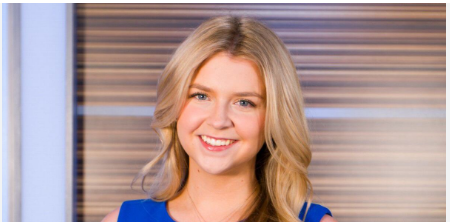Emma Burns is thinking of the designers that come into the mind when you visualize a space with personality, comfort and a home. She is one of the British interior design giants that embraces the historical touch with the contemporary lifestyle in an elegant manner. This paper will present who Emma Burns is, what influences her practice, how her style has evolved, and why her designs are relevant in the present time. Be it that you wonder in colour choices or room arrangement or just want to know what makes beautiful interiors good, the story of Emma Burns can shed some light on the back story of lovely homes.
Who Is Emma Burns?
Childhood and First Years of Career. Emma Burns had worked with the powerhouse company, Charles Hammond in London. In 1984, she became a member of Sibyl Colefax and John Fowler. She eventually worked to become a joint managing director of the firm. Her career involved working on country houses, urban flats, yachts and restoration work.
Real Name
Bio/Wiki
Age,Weight and Height
Next Steps and Goals
Popularity and its Reason
Girlfriend
Career
Networth
Nationality and Religion
Read More
Interesting Facts
Emma Burns biography
| Category | Details |
|---|---|
| Full Name | Emma Burns |
| Profession | Interior Designer |
| Known For | Joint Managing Director at Sibyl Colefax & John Fowler; blending historical design with contemporary comfort |
| Nationality | British |
| Early Career | Worked with Charles Hammond in London before joining Sibyl Colefax & John Fowler in 1984 |
| Current Role | Senior Designer and Joint Managing Director at Sibyl Colefax & John Fowler |
| Design Philosophy | Suitability, comfort, and architectural respect; creating interiors that are elegant, lived-in, and timeless |
| Signature Style | Balanced mix of antiques and new pieces, layered fabrics, calm yet bold colors, attention to craftsmanship |
| Notable Projects | Wimbledon Flat (London), Log Cabin in Wisconsin, Her Own Home in Kensington |
| Firm Affiliation | Sibyl Colefax & John Fowler — one of Britain’s oldest and most respected interior design firms |
| Influence | Upholds and modernizes the classic English country-house aesthetic for modern living |
| networth | $ 1 milion |
Her Role Today
Emma Burns is renowned as one of the seniors in Sibyl Colefax and John Fowler where she manages major projects and preserves the signature style of the company. Suitability, suitability, suitability is what she emphases in her design work. The method of design that she applies centers the life of the client, house architecture, and the room feeling in the middle of the work.
What Is the Style of Emma Burns?
Core Design Principles Architectural respect and respect of history. Emma Burns is of the opinion that the design of a building creates an ambience on how the building should be adorned.
Comfort and liveability.
She repeatedly says that a room ought to be as pleasant to live in as it appears. The colour and texture that belong there. Instead of trends, Emma opts to use palette and fabrics that suit the building, client and context. Common Features in Her Work.
- Patterned and slightly restrained layers of fabrics and wallpapers.
- The use of the antiques and new objects is balanced.
- Palettes that are reminiscent of the architecture: old windows, stone floor, wood paneling.
- Tailored specifications like custom-made curtains, trims, custom-made furniture.
Notable Projects
The following is a comparison of some of the projects that Emma Burns left her mark:
Location of the project Building type Remarkable features.
Wimbledon flat, SW London 18th-century house made into a nice flat Rebuilding of cornices and skirtings; made wardrobes behind the bed; applied strong colour with delicate finishes.
Wisconsin Contemporary construction
Farmhouse and log-cabins in Wisconsin Contemporary construction with an antique appearance Obsolete furniture, birch-bark wallpaper, trim work created by a craftsman–all to create a home that feels old, but new.
The Kensington (converted stable block) house of her own home Personal home Reclaimed furniture, her home and taste being reflected in the interior, not a show-home.
The Business Behind Her Name: Sibyl Colefax and John Fowler.
Heritage and Influence
Sibyl Colefax and John Fowler is a long established interior design company based in Britain. The firm was established in 1942 by Sibyl Colefax and John Beresford Fowler, and it was associated with the style of English country houses. This legacy is passed on to Emma Burns.
How Emma Burns Remains and Revitalises the Legacy.
She is keen to point out that the style is not concerned with imitating the past but discerning some of the eternal values and making them fit into the contemporary lifestyle. She wrote that the work of John Fowler was characterized by the focus on the historical accuracy and sublime comfort and detail.
History of Emma Burns Relationship with the Firm.
Year Milestone
- 1984 Emma Burns becomes part of Sibyl Colefax and John Fowler.
- 2000s-2010s High-profile interiors country house, city flats.
- 2025Interviewed and recognised as one of the most significant people keeping the firm alive.
- Getting to know Her Design Process.
How a Typical Project Begins
Listening and listening to the client and knowing the architecture. Emma Burns accentuates familiarity with the building and person.
Drawings, sample boards, fabric and paint samples. It is not necessary to abandon traditional methods: nothing is more beautiful and romantic than a sketch.
The choice of craftsmen and the introduction of unique details. The company utilizes custom trims or hand weaving a lot.
Working together and Skill.
Emma Burns frequently talks about how important the craft is and the utilisation of the best makers to bring ideas to life. She insists on good design not as show-off items but how the room would feel in the long run.
Dealing with Challenges
She has commented on the work in old buildings where old detail has to be brought back or honored. On one of the projects, she reinstated cornices and skirting boards in order to restore a sense of coherence to the architecture. Meanwhile, she also occasionally works in new structures (such as the log cabins in Wisconsin) and creates the impression that they are old.
Colour as a Story-Teller
Emma Burns tends to wear bold colours but in a manner that is not obnoxious and calm even. As an illustration, she has mentioned that dark colours can transform a dark room into a glamorous room instead of attempting to brighten it.
Respect for Existing Pieces
In his work, Emma Burns uses existing things as may be owned by a client: furniture, artworks and even old rugs in such a way that the inside is personal but not like a showroom. As in the case with the Wimbledon flat project, it used old furniture owned by clients.
Aging Interiors With Style.
Among the design mantras that she has is that the room must be as good in twenty years as it is now. She referred to one of her projects as being painted as it would be good even in twenty years.
Adaptation of Scale
Emma Burns varies her style of approach with the size and setting, country houses and urban flats. She has once thought of the inappropriateness of a grand scheme of libraries to a cellar of a little-town house: everything lies in suitability.
Influence and Legacy
The Importance of Emma Burns in the Interior Design.
She brings an iconic British interior design tradition into the 21 st century.
She can shape the experience of living in historic buildings today, and how new buildings can experience a sense of rootedness through the firm she leads.
Her focus on creating and making, on design, on comfort, is not merely about the appearance of a place, it is about the experience of a place.
Applicability to Home Owners and Professionals.
No matter whether you are a designer or a housewife, there are lessons in her work:
It is necessary to listen to the life of the inhabitant and not to fill space.
The importance of valuing architecture in designing interiors.
The ability of consideration of colour, materials and detail to make a room have character rather than a fad.
The longer the style is, the more valuable it can be than new style.
Cultural and Professional Recognition.
Emma Burns has been featured regularly in design magazines and interviewed as an expert in the subject of historic and modern interiors. The fact that she has been involved in large scale projects (including the stately homes to design flats to tailor-made) proves that clients trust her judgment.
Beneficial Hacks of Emma Burns that you can apply to your house. These are the design take-aways based on what she did.
Tip Why It Matters
Begin with the nature of the building. The architecture establishes the mood and limitations and violating it may give a strange impression on a space.
Keep what you have and it makes sense. Personal pieces bring a space alive as opposed to a set-up that appears like a showroom. Wear the fabrics and colours that suit, rather than the fashionable ones. Fads fade away; appropriateness gives an eternal quality of attractiveness. Apply art and decoration to a room. Good stitching, hand-finished trims and custom finishes provide depth and richness. Imagine the way the room will be lived in. A room should be comfortable, usable and beautiful over many years.
Table: Emma Burns Comparing Two Projects.
Project Location Key Challenges Design Response. Wimbledon flat (London) 18th Century house converted into a flat Layout fussy, former developer had stripped out period detailing Cornices and skirtings restored; new layout (kitchen-dining room) made; strong colours and authentic furniture used.
Log cabin family camp (Wisconsin) Modern construction with rustic overlay New construction with no patina/character unused reclaimed wood (birch bark wallpaper, antler chandelier) and mixed up antiques with self-made fabrics to give it an aging appearance.
Conclusion
Emma Burns, who is an interior designer, is unique in her respect towards architecture and history, attentive to the clients, and chooses colours, fabrics and setups that are lived-in and thoughtful. Her management of Sibyl Colefax and John Fowler is a blend of tradition and contemporary demands and demonstrates that design can be soulful and grounded.
She reminds us that beauty in the interior is not just about making a statement of opulence but also in creating environs in which people can comfortably reside, in which materials are aging, and where history, context and personal significance are important. The principles of her work, which include listening, respecting structure, making thoughtful choices of material and colour, are the guiding ones which one can use not only in a season, but over time.
FAQs
1.What is Emma Burns famous about in the design sphere?
Emma Burns has a reputation as a joint managing director of the British interior-design company Sibyl Colefax & John Fowler, and as possessing the skill of applying both historic style and easy elegance both to country houses and in city residential houses.
2.The approach of Emma Burns to colour in interiors?
She is deliberate with colour: she selects palettes that are appropriate to the architecture, and the life of the person who lives in the house; she does not adapt to any trends that may pass. She is sure that with powerful colour in the correct manner, a space may become more interesting and even bigger.
3.Is it her design style that can be used in a contemporary or a small house?
Yes. Her design philosophy includes one, suitability, that is to say, the style, materials and size of the design should be appropriate to both the building and the life of the client. This is irrespective of the size of the stately home or a smaller modern structure where the aspect of proportion and character is also considered.
4.How is craftsmanship incorporated into her work?
Craftsmanship is central. Emma Burns focuses on employing quality artisans, personal trims, good fabrics and finishes which demonstrate concern. She perceives it as an element of providing space with depth and permanence.
5.What can one do using the principles of Emma Burns within a smaller budget?
You can still employ her principles within a smaller food budget by beginning with architecture (e.g. keeping window and door details), investing in one significant object you already have, using fabrics or colours that do feel good instead of looking fashionable, and one or two special details (e.g., the bespoke cushion or fancy curtain) to give the space a lift.



